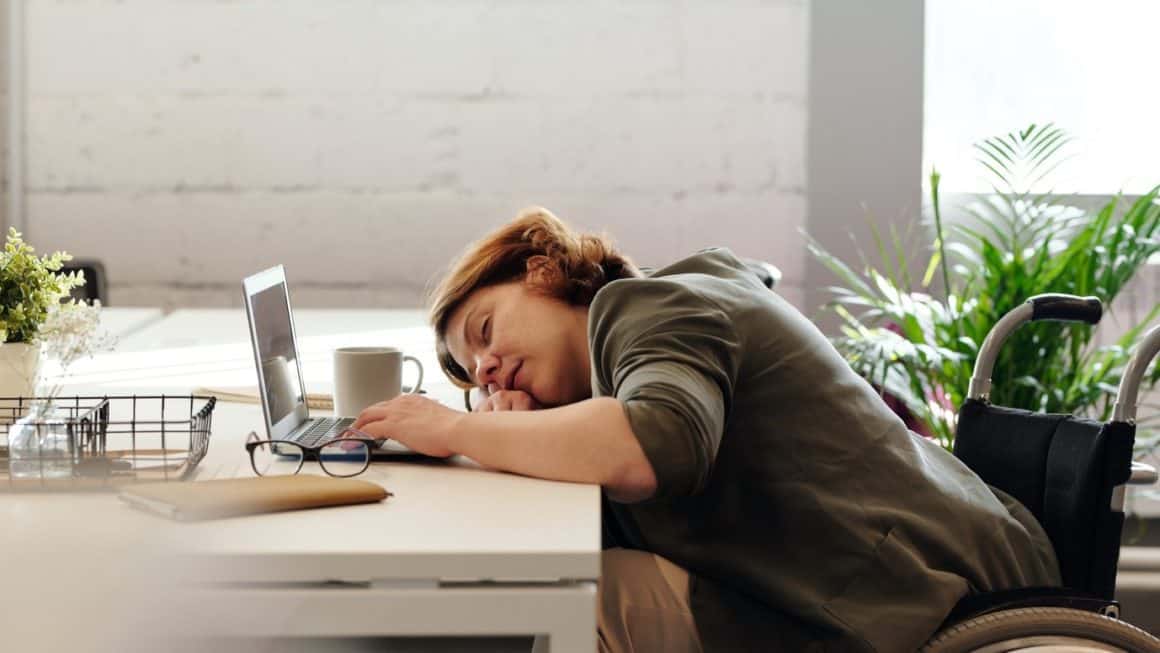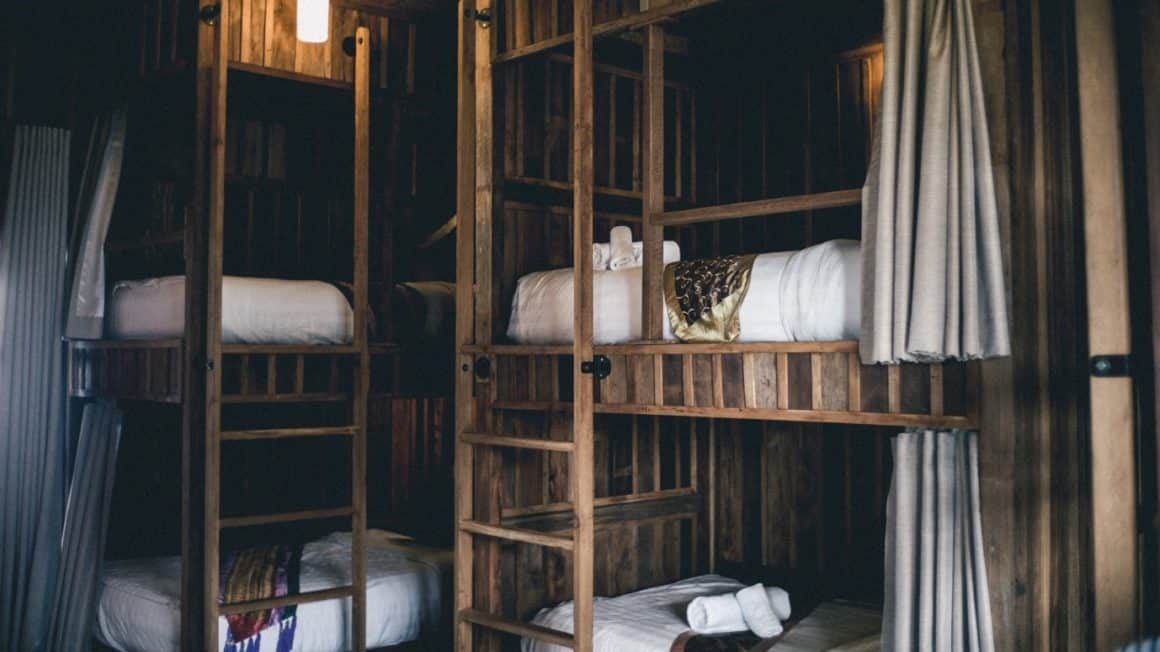Sleeping at work would be a dream for most people, but is it feasible and how would you go about implementing it as an employer, or broaching the subject as an employee?

I’m sure we’d all love to catch a few z’s on our lunch break at work, especially those of us who have an hour break and it only takes us 15 minutes to eat. The problem is, there aren’t many places you can sleep in an office, and even if there were, would your employer let you?
It’s not clear whether sleeping at work gives your employer grounds for disciplinary action against you. So, if you’re seriously thinking about it, you’d do well to talk to your local employment law specialists before going ahead and napping on the job.
Even so, we’re going to discuss the pros and cons of sleeping at work, give you the low down on what a nap desk is and how it’s going to change the game. Then we’ll give both employers and employees some tips on how to develop a sleeping at work policy.
What Are the Pros and Cons of Sleeping at Work?
Not everyone manages to get their recommended 8 or 9 hours of sleep a night because of issues related to stress, or home obligations.
Even those who do get enough shuteye tend to dwindle in the afternoon hours, especially after filling their belly with lunch and chatting with their colleagues. In fact, many sleep experts sing the praises of sleeping at work and its ability to increase productivity.
Here are some pros and cons of sleeping at work to help employers decide if they want to let their employees do it, and employees to decide whether to ask their employer for a mid-afternoon kip.
Pros
- Increased productivity: as we hinted in the intro to this section, sleeping at work in the afternoon can help an employee feel refreshed, alert, and make them a more productive member of staff.
- Fewer accidents: accidents don’t happen all too often in an office, but like with driving or any other task, being tired is the number one cause of accidents in the workplace. Clearly, the benefits of a naps table speak for themselves.
- Increased wellness: if you care about your employees, or if you’re an employee who cares about your own wellbeing, sleep is known to reduce the stress hormone cortisol. Sleeping at work will even help the employee sleep better at night.
- Better behaviour: we’re all aware of how grumpy people can get when they haven’t had enough sleep, so to avoid excessive disputes and confrontations between employees, it’s probably best to just let them rest.
- Attract and retain employees: if you introduce a sleeping at work policy, and another business doesn’t, your staff might keep working for you based on that factor alone. Also, staff members from other companies who like the idea might join your company.

Cons
- Culture of negativity around napping: in many countries, napping in the middle of the day is a no brainer, but in the UK and the US it’s seen as a mark of laziness. If the culture around napping doesn’t change, businesses you work with might think you’re running a ship full of lazy sailors.
- Takes some investment: creating a space for sleeping at work might set you back a whole room, some soundproofing equipment, and a handful of beds. There are ways around this cost, which we’ll cover when we get to the nap desk section of this blog.
- Naps can cause sleep inertia: when a nap lasts more than 20 minutes, the sleeper can suffer from sleep inertia, leaving them groggy and disoriented in the moments immediately after a nap. This only lasts for a few minutes so remember to make sure employees don’t sleep up until the very end of their lunch break and put some buffer time into your sleeping at work policy.
That about covers the pros and cons. Now, it’s time to finally talk about the new invention everyone’s talking about, the nap desk!
What Are Nap Desks and How do They Facilitate Sleeping at Work?
A nap desk is exactly how it sounds; a desk that you can work on as normal, and sleep under when it’s time for a nap. The nap desk was designed by a Greek design company called Studio NL in 2011, winning them the A’Studio Silver Award for Design in the ‘Unexpected’ category.
I’m not going to lie to you, this desk isn’t so unique that you can’t throw one together yourself. It’s basically a thin mattress under a desk with a headboard that levers out on a chain, like a drawbridge. So, you can rest your pillow on it and elevate your head if you want to.
The desk also has a function where a colleague can roll their desk away from yours a little bit and still work next to your sleeping body without disturbing you. If you want to see the desk in action click on this link.
If you want your staff sleeping at work, and you don’t mind not having a fancy drawbridge headboard, you can easily throw one of these together. All you need is a desk on wheels, and a thin mattress, duvet and pillow from IKEA. You could also throw in a few noise-cancelling earplugs for good measure.
Doubling the desk up as a bed could save you loads of money when implementing your sleeping at work policy because you don’t need to create a separate dormitory in the office. If you’re worried about sleeping in front of or having your staff sleep in front of, other colleagues I’m sure you could create a makeshift curtain or barrier to shield them.

How to Make Sleeping at Work Part of Your Business
With most offices having people work from home during the COVID-19 pandemic, many employees won’t be returning to the office for a while or ever, in some cases.
Your employees likely have a bed in their house, and many of them will have been taking naps on their lunch break during the lockdown. To make the transition back to the office easier, and because you should have some free time before they come back, now is probably the best time to build nap desks and introduce a sleeping at work policy.
So, you’re thinking of going ahead with it? Well, now you need a quick rundown of what employers should include in this implementation, before sharing how employees can get some shut-eye if their employers won’t allow them to sleep at work.
Employers
If you’re against the idea of the nap desk, you can create a sleep pod or find a separate room you don’t mind giving up and put some beds in. Make sure whatever location you pick is quiet and cool so the employee can get their full rest.
Naps are most beneficial when they are 20-30 minutes long. Any longer risks the employee going into a deep sleep, and any shorter wouldn’t do them much good, so be sure to make that common knowledge. Also, make sure to include the buffer zone we talked about earlier to give the employee sufficient time to properly wake up once they’ve rested.
Try to foster a positive culture around sleeping at work. You don’t want members of staff picking on those who choose to sleep at work. Any kind of snide remarks and pettiness will discourage those who want to do it and your whole sleeping at work policy might fall flat.
Employees
If you get caught sleeping at work, and the employer doesn’t have a decided upon sleeping at work policy, you could end up getting in a bit of trouble. If you’re determined to sleep at work despite your employer making it clear it’s not okay, speak to an employment law specialist to make sure they can’t fire you for it.
Once you’re sure your job isn’t on the line, it’s best to keep your napping low profile to make sure you don’t rock the boat and get on the wrong side of your employer. Here are a few ways to keep your sleeping at work hush-hush:
1. Nap in your car
Make sure to park a good distance from the office so nobody catches you and, if they ask why you park so far away, tell them you do it to keep fit. If you’re determined to use the office car park, find a secluded corner to reduce the risk of being caught.
2. Nap in the conference room
Most offices have a conference room, and many have more than one. Schedule a meeting in the smallest conference room, invite no-one, unless you have a partner in crime or two who want a nap as well, and go for it.
3. Nap in the toilet
This one is a bit difficult, and I wouldn’t recommend it without putting in a few weeks of training first. Go to the toilet on your lunch break, maybe pick a different floor than the one you work on if you’re in an office building so no-one from your office catches you. Then, choose the farthest cubicle from the door, and sleep on the toilet.
Are Nap Desks the Future of Sleeping at Work?
Today, we’ve managed to cover the pros and cons of sleeping at work, told you what a nap desk is, and explained how easy it would be to make your own. We’ve also given you some tips on how to implement a sleeping policy in your business or get around the lack of a policy as an employee.
Personally, I think nap desks are the cheapest, easiest and best way to implement a sleeping at work policy. No extra rooms are required, everyone will have one so they’re more likely to use them and not look down on those who do, and the underside of a desk is just wasted space if you don’t.
Thank you for reading! If you enjoyed, please give it a share or a like below, or leave a comment if you have any feedback. Do you think napping at work is the future?
